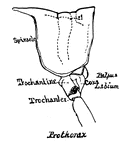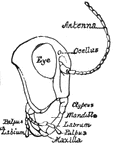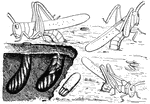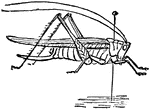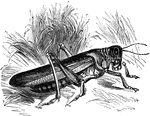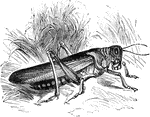Clipart tagged: ‘grasshopper’

Grasshopper
The male grasshopper makes noise by rubbing together hard plates on the inside of the thighs.

Carolina Grasshopper
"The Carolina Grasshopper, Gryllus Carolina, is a large species with brown wings, common in…

Female Grasshopper
Grasshoppers are insects of the suborder Caelifera in the order Orthoptera. To distinguish them from…

Green Grasshopper
Grasshoppers belong to the order Orthoptera. Grasshoppers have mouths fit for biting, net-veined wings,…
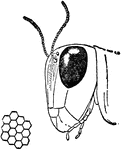
Head of Grasshopper
Illustrated is the head of a grasshopper. It shows the great eye and a detail of a part of the surface…
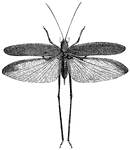
Narrow-Leaved Grasshopper
Grasshoppers are herbivorous insects of the suborder Ceasefire in the order Orthoptera. To distinguish…

Oblong Leaf-Winged Grasshopper
Grasshoppers are herbivorous insects of the suborder Ceasefire in the order Orthoptera. To distinguish…

Locust
The name of several species of insects allied to grasshoppers and crickets. The term is applied conjointly…

Locust Anatomy
Enlarged end of the female, showing oviposition: the oviduct, the egg guide, and the egg issuing from…
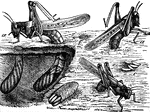
Rocky Mountain Locust
Rocky Mountain Locust. A) female in different positions, B) egg sac, C) loose eggs, D) and E) earth…



